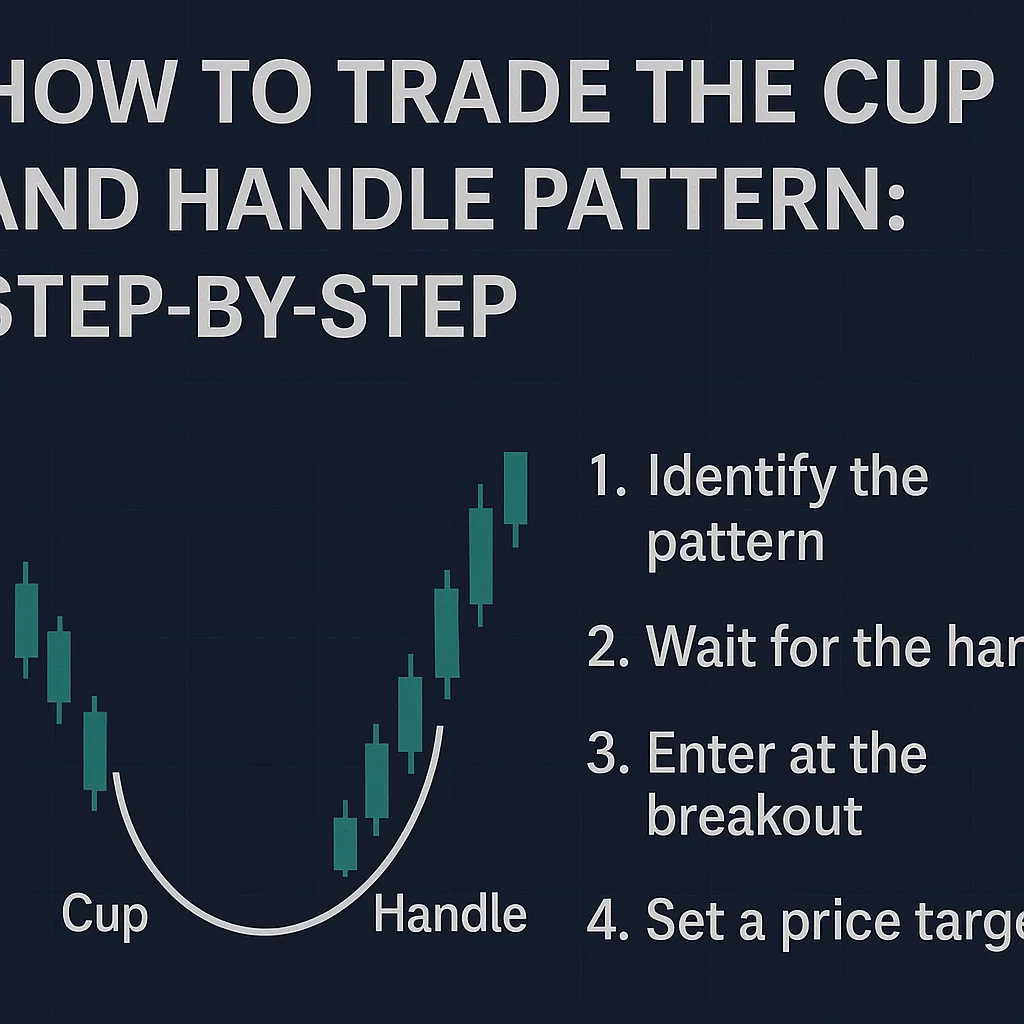
Master trading cup and handle pattern with this step-by-step guide. Learn entry, exit, and risk strategies for success.
Introduction
Trading the cup and handle pattern can unlock profitable opportunities in stocks, forex, and cryptocurrencies. This bullish chart pattern signals potential price increases, but success requires a clear strategy. Whether you’re a beginner or an experienced trader, knowing how to trade the cup and handle pattern step-by-step is essential for timing entries and exits effectively. This guide provides a practical approach to trading this pattern, helping you maximize gains and minimize risks.
What is the Cup and Handle Pattern?
The cup and handle pattern is a bullish continuation chart pattern that forms after a price uptrend. It includes:
- Cup: A U-shaped consolidation, resembling a bowl, lasting 1–6 months.
- Handle: A short, downward-sloping pullback, lasting 1–4 weeks.
The pattern signals a price breakout when the price closes above the handle’s resistance, confirmed by high volume. Trading it effectively involves precise steps to ensure profitable outcomes.
Steps for Trading the Cup and Handle Pattern
Follow this step-by-step guide to trade the cup and handle pattern successfully:
Step 1: Identify the Pattern
Confirm the pattern meets key criteria:
- A prior uptrend (e.g., 10–30% price rise).
- A U-shaped cup with a 20–30% depth, spanning 1–6 months.
- A handle retracing 30–50% of the cup’s advance, lasting 1–4 weeks.
- Volume decreasing in the handle and spiking on breakout.
Use charting tools like TradingView to outline the pattern accurately.
Step 2: Wait for the Breakout
Patience is key when trading cup and handle patterns. Enter a trade only when:
- The price closes above the handle’s resistance (the cup’s peak).
- Volume surges, confirming buyer conviction.
- The breakout is sustained, avoiding false signals.
For example, if a stock forms a cup from $50 to $40 and back to $50, with a handle at $48, wait for a close above $50 on high volume before trading.
Step 3: Set Entry and Exit Points
- Entry: Buy after the breakout, ideally on the first strong close above resistance or a pullback to the breakout level for a safer entry.
- Exit: Set a price target by measuring the cup’s depth (e.g., $10 from $50 to $40) and adding it to the breakout point ($50 + $10 = $60 target).
- Use trailing stops to lock in profits if the price continues rising.
Step 4: Manage Risk
Protect your capital with:
- Stop-Loss: Place a stop-loss below the handle’s low (e.g., $47 if the handle is at $48) to limit losses on false breakouts.
- Position Sizing: Risk no more than 1–2% of your account per trade to manage volatility.
- Risk-Reward Ratio: Aim for a ratio of at least 2:1 (e.g., $10 potential gain vs. $5 risk).
Step 5: Monitor and Adjust
After entering the trade:
- Watch volume and price action to confirm the breakout’s strength.
- Use indicators like RSI or moving averages to gauge momentum.
- Adjust stops or exit early if market conditions shift (e.g., bearish news).
Common Trading Mistakes
- Entering Too Early: Trading during the handle risks losses if the breakout fails.
- Ignoring Volume: Low-volume breakouts often lead to reversals.
- Neglecting Market Context: A bullish market enhances the pattern’s success rate.
Tools and Resources
Enhance your trading with these resources:
- TradingView: Chart patterns and set alerts for breakouts. Visit TradingView.
- Investopedia: Learn trading strategies and risk management. Read on Investopedia.
- BabyPips: Explore forex trading techniques applicable to chart patterns. Explore BabyPips.
Tips for Successful Trading
- Practice on Demo Accounts: Test strategies without risking real money.
- Study Historical Breakouts: Analyze past cup and handle trades to refine timing.
- Use Indicators: Combine with MACD or Bollinger Bands for stronger signals.
- Stay Disciplined: Stick to your plan, avoiding emotional trades.
FAQ Section
Q: When should I enter a cup and handle pattern trade?
A: Enter after the price closes above the handle’s resistance with high volume confirmation.
Q: How do I set a price target when trading cup and handle patterns?
A: Measure the cup’s depth and add it to the breakout point to estimate the target.
Q: What is the best stop-loss for a cup and handle trade?
A: Place a stop-loss below the handle’s low to protect against false breakouts.
Q: Can I trade the cup and handle pattern in forex or crypto?
A: Yes, the pattern works in forex and crypto, but confirm with volume and market trends.
Q: How do indicators help when trading cup and handle patterns?
A: Indicators like RSI or moving averages confirm breakout strength and momentum.
Conclusion
Trading the cup and handle pattern offers a clear path to profitable trades when done correctly. By identifying the pattern, waiting for a confirmed breakout, setting smart entry and exit points, and managing risk, you can succeed in stocks, forex, and crypto. Use tools like SAPRO and stay disciplined to master this strategy. For more trading insights, visit https://cupandhandlepattern.com/.





Leave a Reply